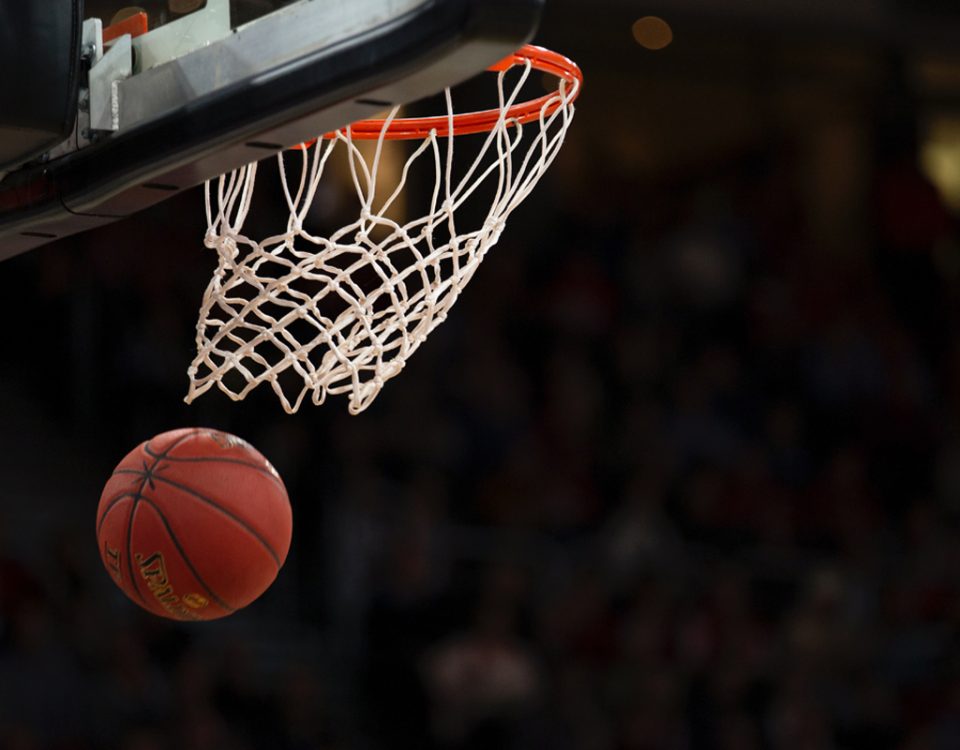
The NCAA Committee on Infractions Has Spoken: University of Idaho
June 18, 2021The NCAA Committee on Infractions Has Spoken: Creighton University
June 22, 2021On June 21, 2021, the United States Supreme Court (“Court”) issued its ruling in National Collegiate Athletic Association v. Alston. Justice Gorsuch writing for the Court affirmed the decision of the District Court with all nine (9) justices voting to affirm. Justice Kavanaugh also wrote a scathing concurring opinion.
After the ten (10) day bench trial before the District Court, the District Court struck down NCAA rules limiting the education-related benefits colleges and universities may offer student-athletes such as rules that prohibit colleges and universities from offering graduate or vocational school scholarships. In this appeal to the Court, Justice Gorsuch framed the issues before the Court as the NCAA “seek[ing] immunity from the normal operation of the antitrust law and argue[d]…that the district court shall have approved all of its existing restraints.”
In most antitrust cases, the dispute turns on whether the plaintiff can establish an anticompetitive restraint in the relevant market. Here, the parties do not dispute the market definition and do not challenge many of the standard challenged issues including:
- The parties do not challenge the District Court’s definition of the relevant market.
- The parties do not contest that the NCAA enjoys monopoly control in the labor market such that the NCAA is capable of depressing wages below competitive levels and restricting the quantity of student-athlete labor.
- The NCAA does not dispute that member institutions “compete fiercely” for student-athletes, but remain subject to NCAA issued and enforced limits on compensation.
- The parties do not dispute that the NCAA’s restrictions decrease the compensation that student-athletes receive compared to what a competition market would yield.
- The parties do not question that decreases in compensation also depress participation by student-athletes in the relevant labor market so that price and quantity are both suppressed.
- The NCAA does not argue that the student-athletes must show that restraints harm competition in the seller-side (or consumer facing) market as well as in its buyer -side (or labor) market.
- The student-athletes do not question that the NCAA may permissibly seek to justify its restraints in the labor market by pointing to procompetitive effects they produce in the consumer market.
NCAA Argued for “Quick Look” Review
The NCAA argued that the lower courts erred by subjecting its compensation restrictions to a rule of reason analysis and, thus, the lower courts should have given the NCAA’s restrictions “abbreviated deferential review” or a “quick look” before approving them. The NCAA argued that it is a joint venture and that collaboration among its members is necessary if they are to offer consumers the benefit of intercollegiate athletic competition. Most challenged restraints, however, are subject to rule of reason analysis. The NCAA accepted that its membership collectively enjoys monopsony power in the market for student-athlete services, such that its restraints can and do harm competition. The Court stated “[e]ven if the NCAA is a joint venture, then, it is hardly of the sort that would warrant quick-look approval for all its myriad rules and restrictions.” Accordingly, the Court stated the dispute “presents complex questions requiring more than a blink to answer” and, thus, declined to determine the competitive effects of the challenged restrains in the “twinkling of an eye”.
Addressing Board of Regents
The NCAA has long been successful in defending in antitrust cases by citing dicta from Board of Regents. The commonly referenced passage is as follows:
The NCAA plays a critical role in the maintenance of a revered tradition of amateurism in college sports. There can be no question but that it needs ample latitude to play that role, or that the preservation of the student-athlete in higher education adds richness and diversity to intercollegiate athletics and is entirely consistent with the goals of the Sherman Act.
The Court, however, stated “these remarks do not suggest that courts must reflexively reject all challenges to the NCAA’s compensation restrictions.”
The Court noted that intercollegiate athletics has vastly changed since 1984 when Board of Regents was decided. The Court referenced “new and higher limits” set for athletic scholarships, permissible benefits given to student-athletes, and the Student Assistance Fund and the Academic Enhancement Fund. The Court concluded “[g]iven the sensitivity of antitrust analysis to market realities—and how much has changed in this market—we think it would be particularly unwise to treat an aside in Board of Regents as more than that.”
Argument for Judicial Immunity
The NCAA represented that it seeks to “maintain amateurism in college sports as part of serving [the] societally important non-commercial objective” of “higher education” and, thus, rule of reason analysis is inappropriate. The Court noted that the NCAA does not contest that its restraints affect interstate trade and commerce and, thus, are subject to the Sherman Act. The Court decided against providing the NCAA with a form of judicial immunity and stated the Court “has regularly refused materially identical requests from litigants seeking special dispensation from the Sherman Act on the ground that their restraints of trade serve uniquely important social objectives beyond enhancing competition.” The Court pointed to Congress and said the “orderly way” of seeking such relief is “by legislation and not by court decision.”
Application of Rule of Reason Analysis
The District Court found that “some” of the NCAA’s rules “may” have procompetitive effects “to the extent” they prohibit compensation “unrelated to education, akin to salaries seen in professional sports leagues.” The NCAA argued that the District Court micromanaged its legitimate business decisions by requiring the NCAA to show its rules constituted the least restrictive means of preserving consumer demand. The Court stated “nothing above the district court’s analysis…offends the legal principles the NCAA invokes.”
The NCAA also contended the District Court “impermissibly redefined” its “product” by rejecting the NCAA’s view about what amateurism requires and replacing them with its preferred conception. The NCAA requested deference to its notion of amateurism, but the District Court concluded the NCAA had not adopted a consistent definition of what amateurism entailed, the NCAA adopted restrictions without any reference to “considerations of consumer demand”, and some restrictions were not necessary to preserve consumer demand. The Court concluded such analysis by the District Court was a “straightforward application of the rule of reason.”
Next, the NCAA argued against the lower courts’ holdings that less restrictive alternatives exist capable of delivering the same procompetitive benefits as its current rules. The District Court only restrained education-related benefits such as limiting scholarships for graduate school and payments for tutoring. By relaxing these restrictions, the District Court concluded that there was a significantly less restrictive means of achieving the same procompetitive benefits as the NCAA’s current rules. Indeed, the NCAA was given “considerable leeway” including the ability to develop its own definition of benefits that relate to education, to seek modification of the District Court’s injunction to reflect that definition, and permitting the membership to agree on rules regulating how conferences and institutions go about providing education-related benefits. The Court concluded that the District Court’s analysis honored general legal principles against judicial interference.
In conclusion, the Court found that the District Court’s injunction was consistent with established antitrust principles. The NCAA is not permitted to have rules that restrict education-related benefits colleges and universities may offer student-athletes. The ruling of the Court does not permit colleges and universities to pay market-based compensation to student-athletes.
Concurring Opinion
Justice Kavanaugh wrote a scathing concurring opinion signaling possible greater reform. Justice Kavanaugh stated he wrote a concurring opinion because “the NCAA’s remaining compensation rules also raise serious questions under the antitrust laws” and, further, indicated there are “serious questions” as to whether such remaining legislation “can pass muster under ordinary rule of reason scrutiny.” Three passages in the concurring opinion are thought provoking and are as follows:
In my view, that argument is circular and unpersuasive. The NCAA couches its arguments for not paying student athletes in innocuous labels. But the labels cannot disguise the reality: The NCAA’s business model would be flatly illegal in almost any other industry in America. All of the restaurants in a region cannot come together to cut cooks’ wages on the theory that “customers prefer” to eat food from low-paid cooks. Law firms cannot conspire to cabin lawyers’ salaries in the name of providing legal services out of a “love of the law.” Hospitals cannot agree to cap nurses’ income in order to create a “purer” form of helping the sick. News organizations cannot join forces to curtail pay to reporters to preserve a “tradition” of public-minded journalism. Movie studios cannot collude to slash benefits to camera crews to kindle a “spirit of amateurism” in Hollywood.
***
The bottom line is that the NCAA and its member colleges are suppressing the pay of student athletes who collectively generate billions of dollars in revenues for colleges every year. Those enormous sums of money flow to seemingly everyone except the student athletes. College presidents, athletic directors, coaches, conference commissioners, and NCAA executives take in six- and seven-figure salaries. Colleges build lavish new facilities. But the student athletes who generate the revenues, many of whom are African American and from lower-income backgrounds, end up with little or nothing.
***
Nowhere else in America can businesses get away with agreeing not to pay their workers a fair market rate on the theory that their product is defined by not paying their workers a fair market rate. And under ordinary principles of antitrust law, it is not evident why college sports should be any different. The NCAA is not above the law.
If history has shown anything, another antitrust action will soon follow and that action will attempt to expand upon what the Court ruled here. Invariably, the above-referenced passages will be cited ad nauseam by the next set of plaintiffs.
For any questions, feel free to contact Christian Dennie at cdennie@bgsfirm.com .

